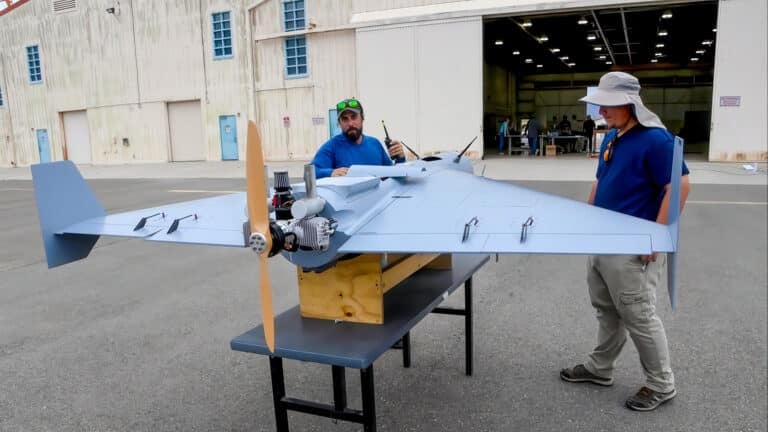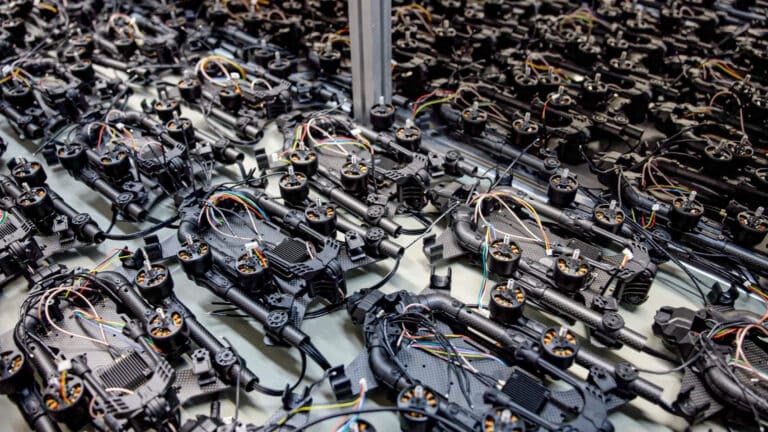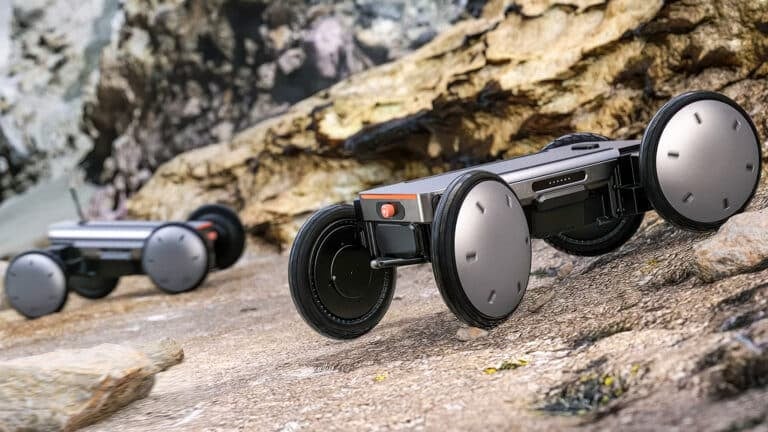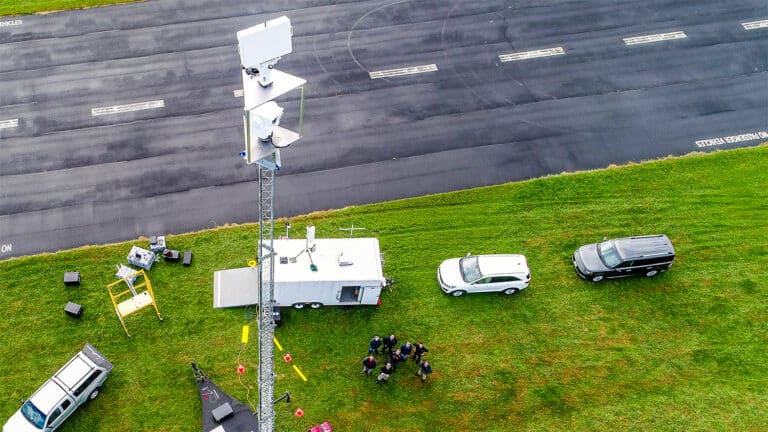Hubless Drone Concept Looks Stunning But Physics Says Otherwise
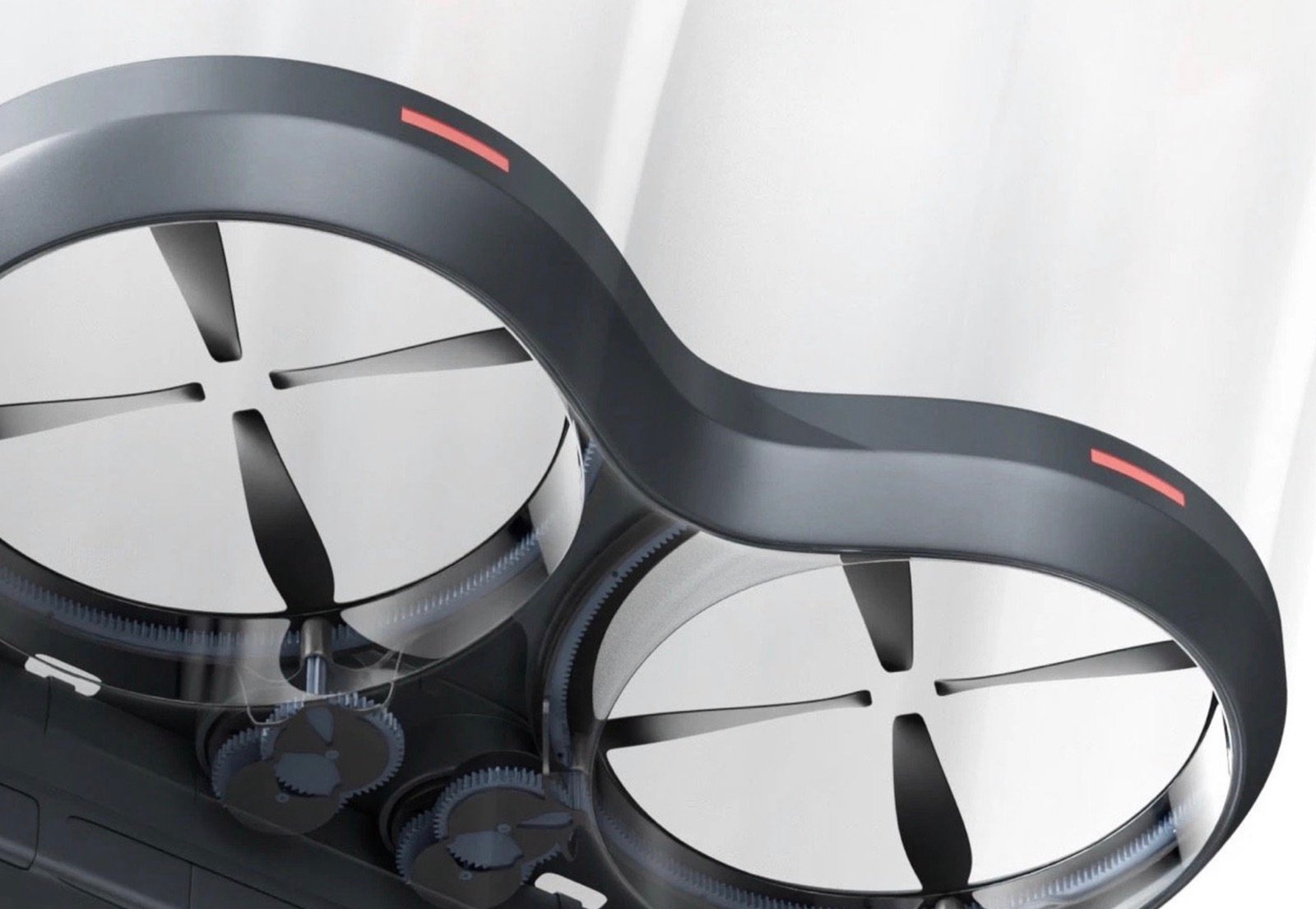
A striking new drone design promises crash-proof durability through monocoque construction and hubless rotors. But there’s a problem: the technology works underwater, not in the air.
The Mono Mothra concept from Rify Studio and designer Martunis reimagines the quadcopter as a single-piece unibody built to survive crashes that would shatter conventional drones. Its most eye-catching feature? Four “hubless” rotors that appear to spin without central motors, their blades attached only at the rim.
The renders look like something from a sci-fi film. But beneath the sleek aesthetic lies a fundamental engineering challenge that the designers haven’t addressed.
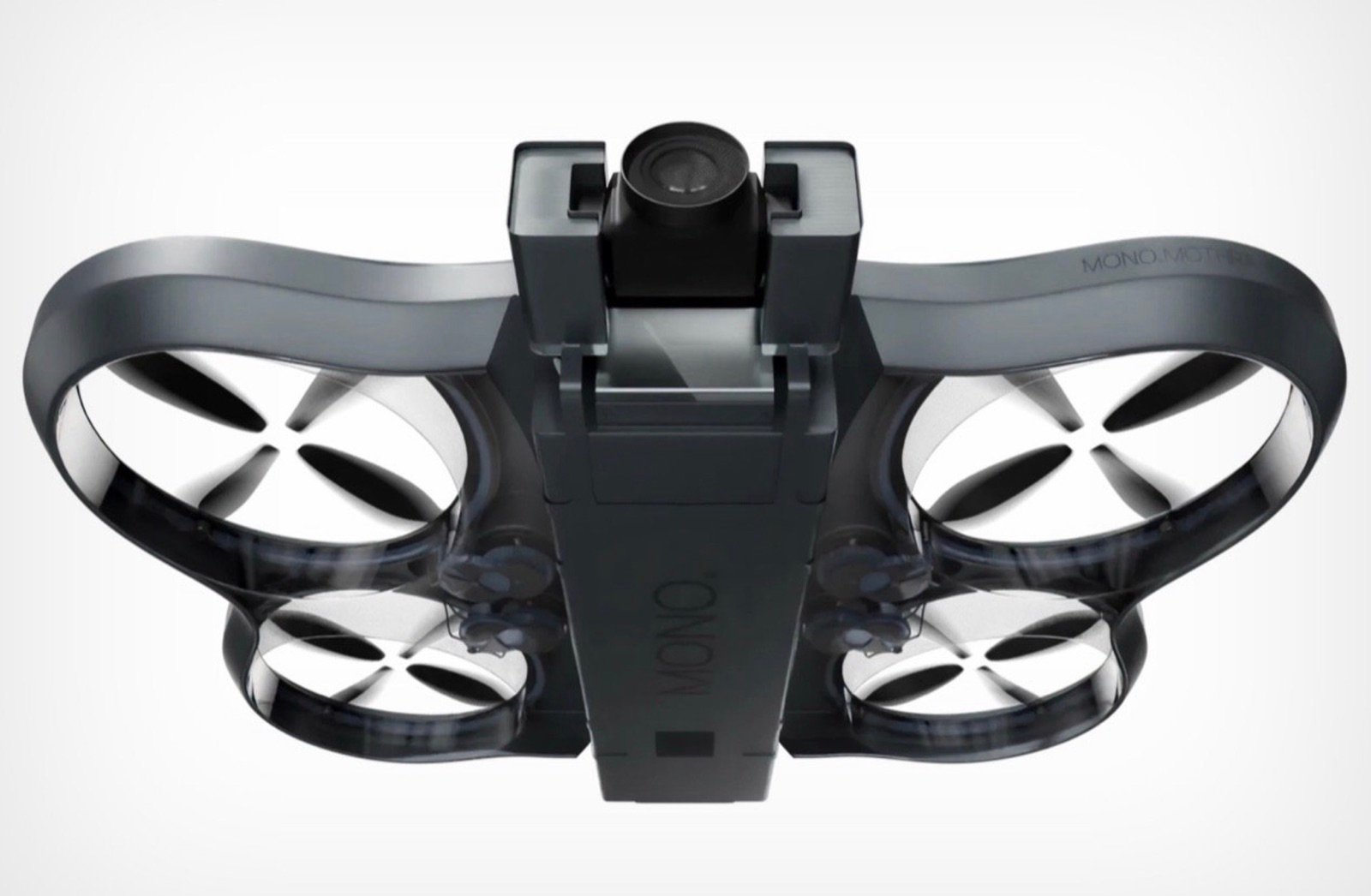
The Monocoque Promise
The Mono Mothra tackles drone fragility through two core principles: structural integration and rotor protection.
Unlike typical quadcopters with bolted-together arms that snap on impact, this concept employs a monocoque shell. The outer ring forms the primary structure, distributing crash forces across the entire continuous surface rather than concentrating stress at connection points.
Four substantial ducts fully enclose the rotors. This ducting provides protection against side impacts with walls, branches, or the ground while maintaining the drone’s clean profile.
The camera module rejects exposed gimbals in favor of a solid housing integrated into the forward section. Ribbed side panels suggest either functional heat dissipation or aesthetic reinforcement of the durability theme.
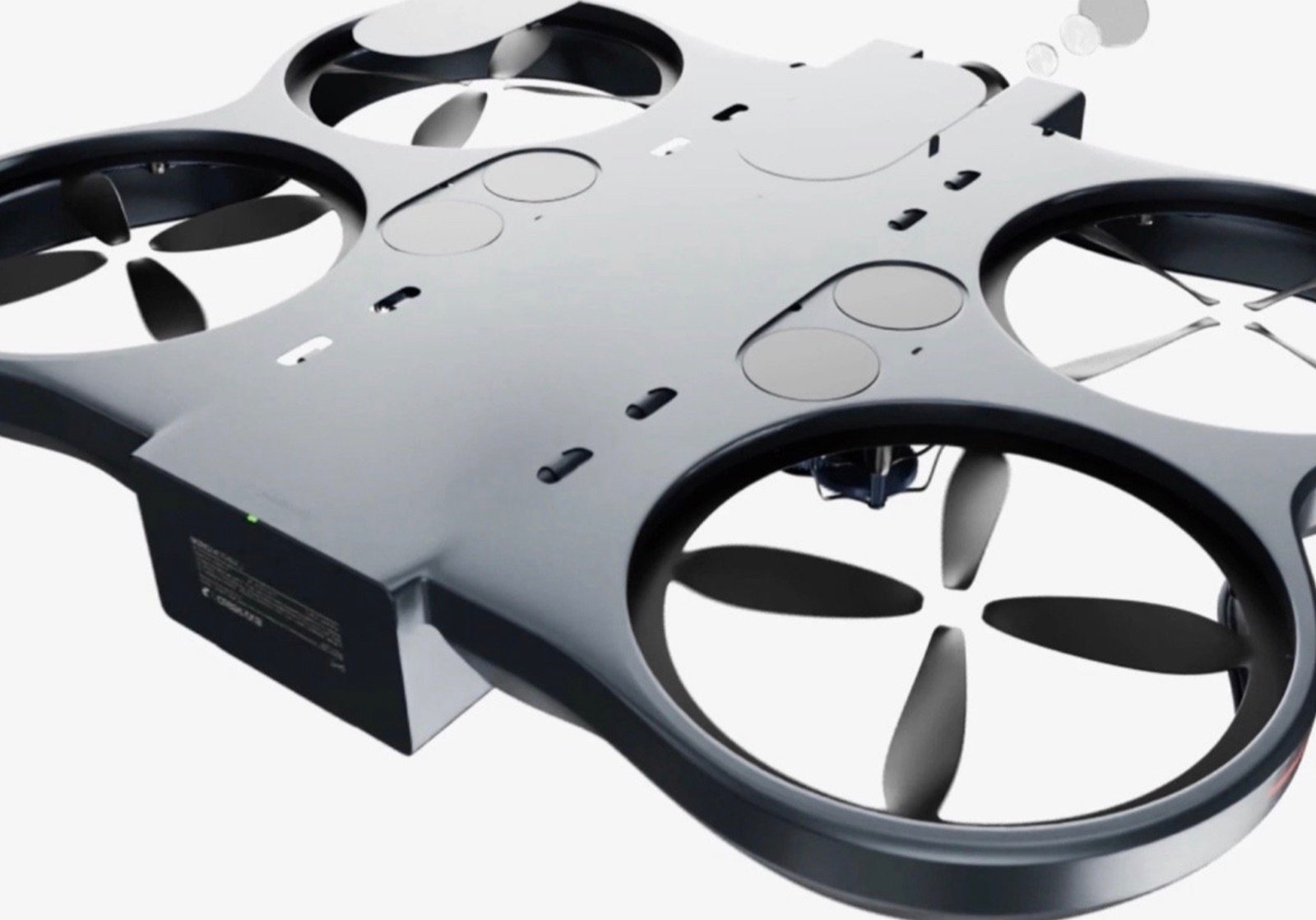
The Hubless Problem
Here’s where reality intrudes on the design fantasy.
The renders hint at “a gear-driven system hidden beneath the rotors” to achieve the hubless appearance. But rim-driven propulsion for aerial drones faces severe practical obstacles that underwater applications don’t encounter.
Rim-driven thrusters work brilliantly underwater. Companies like Hydromea and Copenhagen Subsea manufacture commercial rim-driven propulsors where the motor’s rotor ring directly drives the propeller blades at their tips. These systems eliminate central hubs, reduce entanglement risk, and achieve lower noise signatures in marine environments.
Academic research confirms aerial rim-driven fans can function. A 2017 study on small unmanned aircraft demonstrated rim-driven fan technology could lift and propel a small UAV.
The catch? “The performance testing of the Rim Driven Fan demonstrated that in its prototype configuration it would not be as efficient as a conventional Brushless DC motor and propeller,” the researchers concluded.
That efficiency penalty matters enormously for battery-powered multirotors where every watt-hour counts.
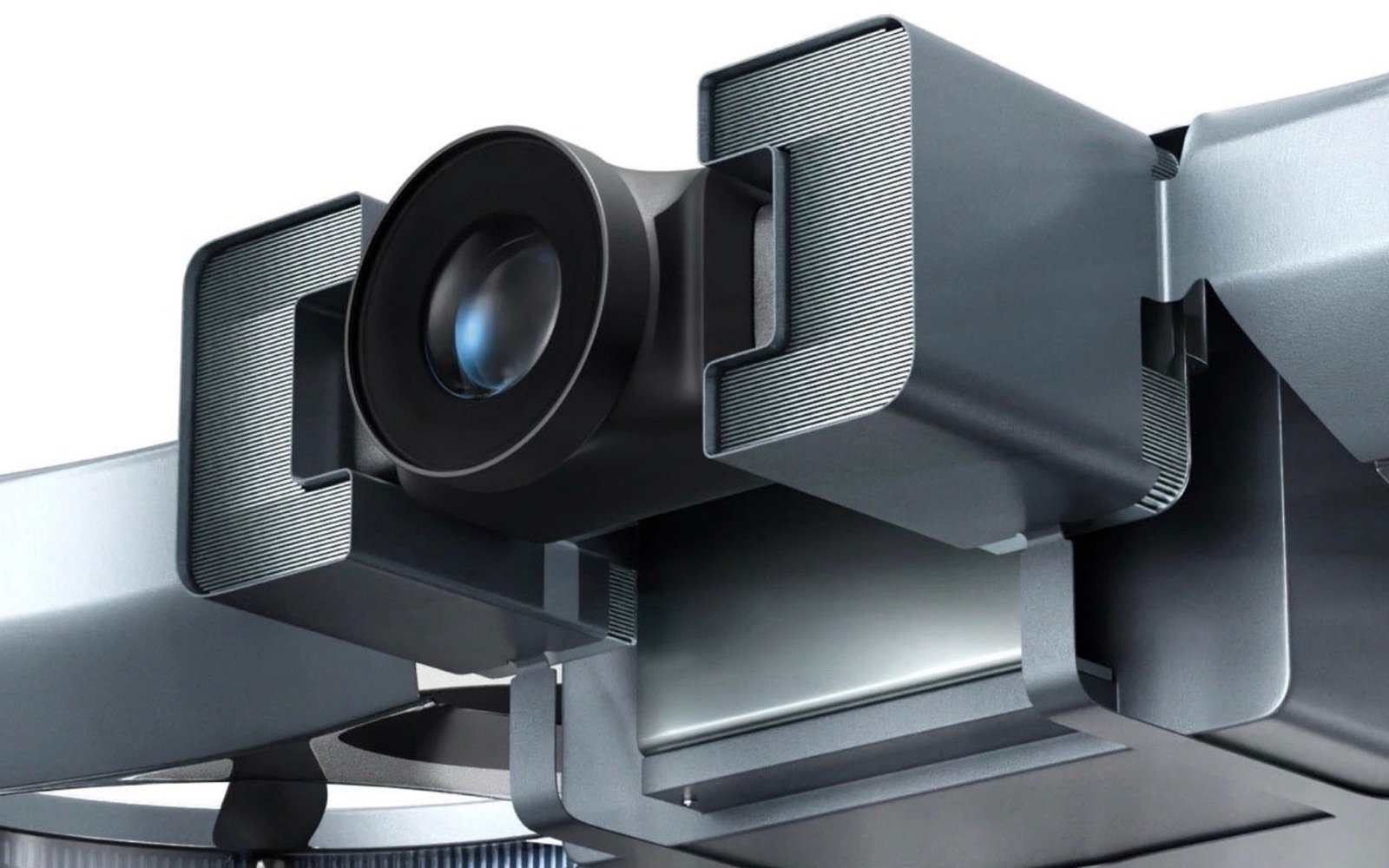
Gear-Driven Compromise
The Mono Mothra concept appears to sidestep true rim-driven propulsion entirely. The designers mention gear-driven systems hidden beneath the rotors, suggesting conventional motors driving the blades through mechanical transmission.
This adds weight, introduces mechanical complexity, and creates potential failure points. The very modularity and repairability the monocoque design sacrifices become critical when gear systems fail.
Conventional hub-driven motors remain dominant in aerial drones because they’re lightweight, efficient, and reliable. The propeller mounts directly to the motor shaft with minimal mechanical losses.
Real Durability Innovation
The irony is that actual crash-resistant drones already exist without resorting to unproven propulsion concepts.
DJI’s recently launched Flip drone demonstrates practical durability through full-coverage propeller cages integrated into a foldable sub-250-gram design. The carbon fiber guards protect against impacts while maintaining conventional motor efficiency.
The DJI Neo employs circular propeller guards that enable hand launches and close-proximity flight around people. Both designs prioritize safety through ducting, not through reinventing propulsion.
FAA research on drone operations over people shows that frangible designs absorb 50 to 80 percent of kinetic energy during crashes. Energy dissipation comes from components that deform or fragment, not from exotic motor configurations.
Even unconventional designs like the bio-inspired LisRaptor with morphing wings and tail surfaces retain conventional propulsion. Innovation in flight control doesn’t require abandoning proven motor technology.
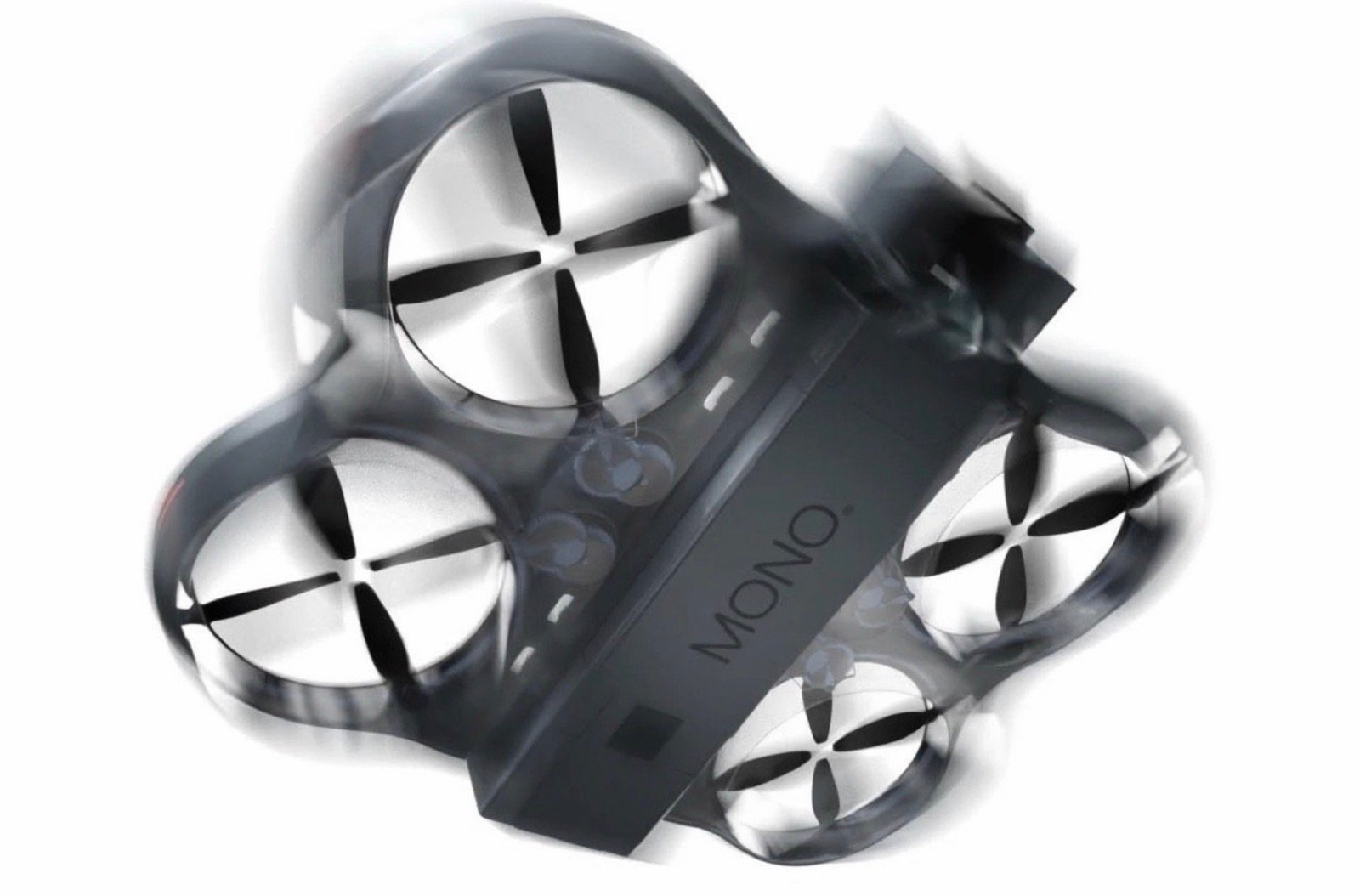
Form Versus Function
Industrial design concepts serve important purposes. They push boundaries, challenge assumptions, and inspire new thinking about familiar products.
The Mono Mothra’s monocoque construction addresses a real problem. Conventional drone frames concentrate stress at arm connections, creating predictable failure points. A continuous shell could genuinely improve crash survival.
But wrapping a legitimate structural innovation around speculative propulsion technology undermines the concept’s credibility. Engineers evaluating the design immediately focus on the hubless rotors’ impracticality rather than the monocoque shell’s potential.
The drone industry has seen numerous propeller innovations that address real problems. Zipline’s uneven blade spacing reduces noise. MIT’s toroidal propellers minimize vortex formation. These advances work because they improve conventional propulsion rather than replacing it.
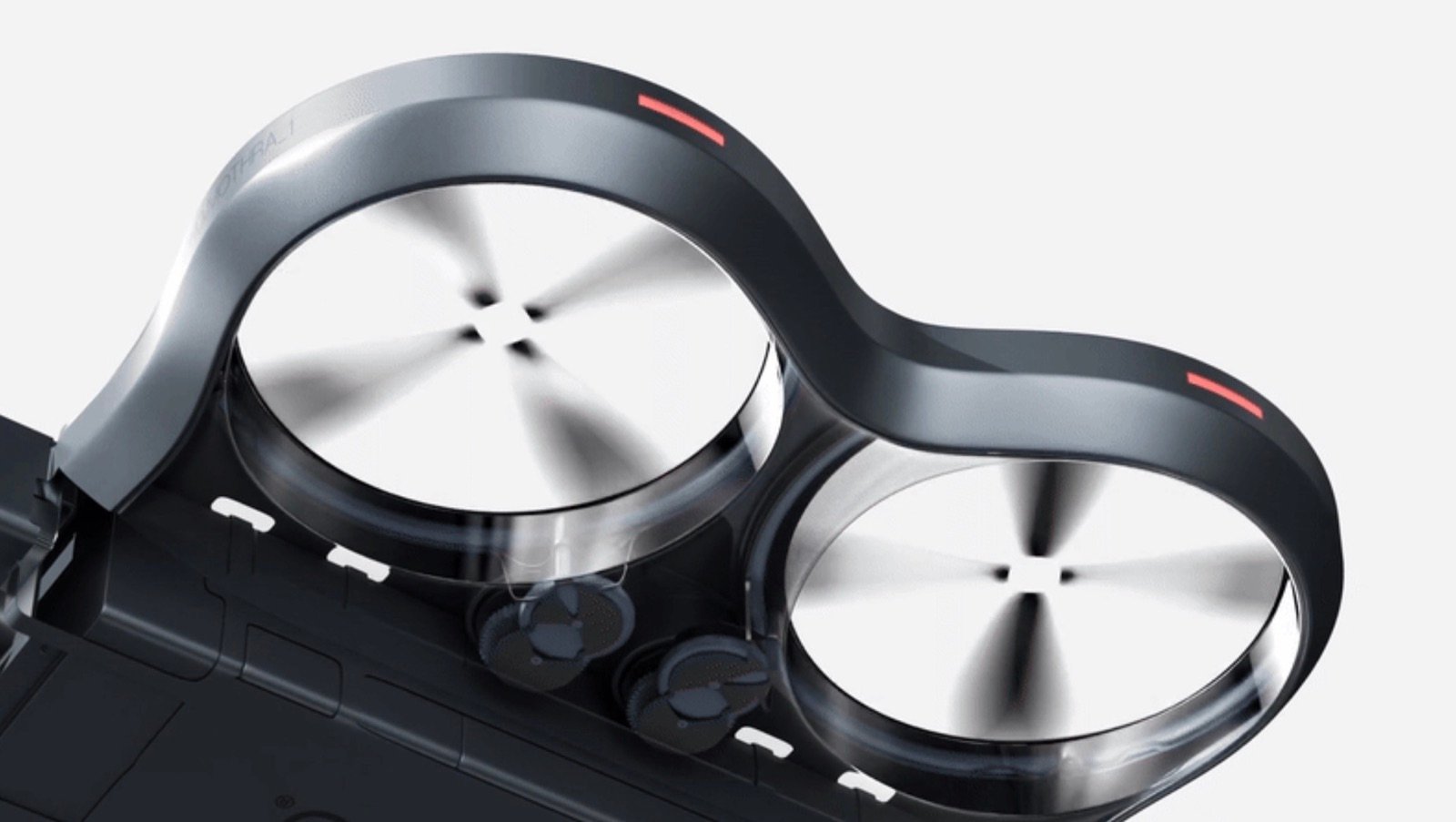
DroneXL’s Take
The Mono Mothra represents an increasingly common phenomenon in consumer technology: concept designs that prioritize aesthetics over engineering feasibility. The sleek renders generate buzz on design blogs and social media, but the underlying technology doesn’t exist in functional form for aerial applications.
This matters because it creates unrealistic expectations about what’s possible in drone design. Pilots see stunning concepts and wonder why manufacturers don’t implement these “obvious” improvements. The reality is that companies like DJI spend years optimizing designs around real-world physics and engineering constraints.
The trajectory from DJI’s Flip to conventional drone safety features shows how practical durability advances actually happen: through iterative improvements to proven technologies, not through wholesale propulsion redesigns.
The genuine innovation in crash-resistant drones comes from material science, structural engineering, and intelligent control systems. Freefly’s Astro Max achieves extraordinary durability through testing to 14,600 operational hours over five years. That’s engineering rigor, not industrial design fantasy.
Compare this to the DIY military-grade drone built for $120 that replicates $40,000 commercial systems. That project succeeded precisely because it used conventional, proven components assembled intelligently. Innovation doesn’t always require reinventing the wheel—sometimes it means using the right wheel in a smarter way.
The monocoque approach deserves serious consideration. But pair it with conventional hub-driven motors, optimize the ducting for aerodynamic efficiency, and you’d have a design worth prototyping. The hubless motors? Save those for the underwater drones where they actually work.
What do you think? Share your thoughts in the comments below.
Discover more from DroneXL.co
Subscribe to get the latest posts sent to your email.
Check out our Classic Line of T-Shirts, Polos, Hoodies and more in our new store today!

MAKE YOUR VOICE HEARD
Proposed legislation threatens your ability to use drones for fun, work, and safety. The Drone Advocacy Alliance is fighting to ensure your voice is heard in these critical policy discussions.Join us and tell your elected officials to protect your right to fly.
Get your Part 107 Certificate
Pass the Part 107 test and take to the skies with the Pilot Institute. We have helped thousands of people become airplane and commercial drone pilots. Our courses are designed by industry experts to help you pass FAA tests and achieve your dreams.

Copyright © DroneXL.co 2025. All rights reserved. The content, images, and intellectual property on this website are protected by copyright law. Reproduction or distribution of any material without prior written permission from DroneXL.co is strictly prohibited. For permissions and inquiries, please contact us first. DroneXL.co is a proud partner of the Drone Advocacy Alliance. Be sure to check out DroneXL's sister site, EVXL.co, for all the latest news on electric vehicles.
FTC: DroneXL.co is an Amazon Associate and uses affiliate links that can generate income from qualifying purchases. We do not sell, share, rent out, or spam your email.




